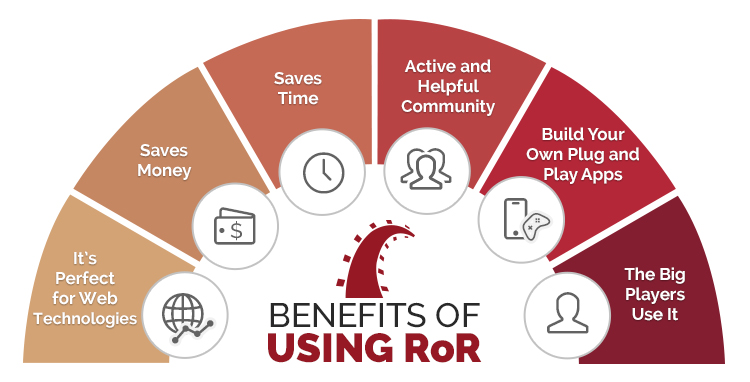The Hosting Insight
Your go-to source for the latest in web hosting news and tips.
Ruby on Rails: The Framework That Grows With You
Discover why Ruby on Rails is the ultimate framework for your evolving projects and unlock your development potential today!
Why Choose Ruby on Rails for Your Next Project?
Ruby on Rails is an open-source web application framework that has gained immense popularity among developers for its elegant syntax and productivity-enhancing features. One of the main advantages of using Ruby on Rails is its ability to facilitate rapid application development. The framework follows the Convention over Configuration principle, minimizing the number of decisions developers need to make, which accelerates the development process. Additionally, with tools like Active Record for database management and built-in testing frameworks, Ruby on Rails allows teams to build high-quality applications more efficiently than many other platforms.
Furthermore, the thriving Rails community offers countless resources, tutorials, and plugins, enhancing the framework's versatility. By choosing Ruby on Rails for your next project, you also benefit from a rich ecosystem of gems—libraries that extend functionality without requiring you to reinvent the wheel. This can significantly reduce development time and enable your team to focus on unique features rather than repetitive tasks. In short, selecting Ruby on Rails means committing to a technology that prioritizes both speed and quality, making it an ideal choice for startups and established businesses alike.

The Evolution of Ruby on Rails: How It Adapts to Your Needs
Ruby on Rails has undergone significant evolution since its inception in 2004, adapting to the ever-changing landscape of web development. Initially designed to streamline the process of building web applications, Rails has incorporated features that enhance scalability, performance, and security. By embracing modular design patterns and integrating various libraries, Rails allows developers to customize their applications easily, making it a versatile choice for projects of all sizes. As the framework grows, it continues to focus on developer productivity and supports the latest web standards, ensuring that it remains relevant in a competitive environment.
One of the key strengths of Ruby on Rails is its vibrant community, which plays a crucial role in its continuous adaptation. Community-driven initiatives lead to regular updates, the introduction of new gems, and the enhancement of existing tools. This collaborative environment fosters innovation, allowing developers to share solutions and best practices. Furthermore, with the rise of API-centric architectures, Rails has expanded its capabilities to support RESTful services and JSON APIs, ensuring that it meets the diverse needs of modern web applications. As it evolves, Rails remains committed to its core principles of simplicity and convention over configuration, making it accessible for both newcomers and seasoned developers.
10 Tips for Scaling Your Ruby on Rails Application Effectively
Scaling your Ruby on Rails application effectively is crucial for accommodating growth and ensuring user satisfaction. Here are 10 tips that can help you achieve this goal; first, consider optimizing your database queries. Efficient queries significantly reduce load times. Use tools like bullet to identify N+1 queries and explain to understand how your queries are executed. Second, implement caching strategies to minimize database hits. Utilize fragment caching, page caching, or a cache store like Redis to speed up response times.
Next, ensure your application is using background jobs effectively. Offload time-consuming tasks such as sending emails or processing images to a background job processor like Sidekiq or Resque. Additionally, consider utilizing a content delivery network (CDN) to serve static files faster, thereby reducing the load on your server. It's also important to monitor application performance regularly; tools like New Relic or Scout can help you identify bottlenecks. Finally, as you scale, remember to maintain code quality through refactoring and adherence to best practices for continued maintainability and performance.